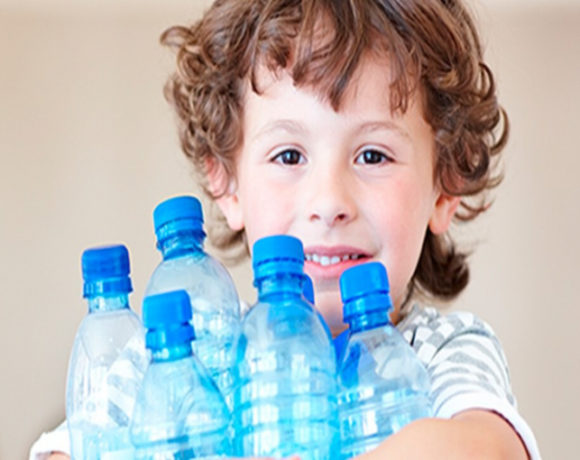Antioquia Gold Mining Projects Bloom, but Environmental, Social Issues Remain: Special Report

For more than 150 years, Antioquia has been Colombia’s biggest gold producer — and in-development projects are likely to keep it that way.
However, the 320 delegates to the second annual Colombia Gold Symposium (CGS) here in Medellin November 14-15 also heard warnings on real and potential threats to growth — with environmental issues potentially surpassing the historic problems of violence in gold-mining areas.
The most highly-publicized current battle in Colombia against proposed gold mining isn’t in Antioquia, but rather in neighboring Santander, where the citizens of Bucaramanga (population 522,000) are trying to intervene in Minesa’s proposed US$1 billion “Soto Norte” project near the village of California, northeast of Bucaramanga. Water pollution is the claimed issue.
Minesa CEO Darren Bowden pointed out at CGS here that the Soto Norte project is among the top-five biggest gold-mining development projects in the world — estimated to produce some 10 million ounces over the expected 25-year-life of the mine.
This project won’t employ toxic mercury nor cyanide, as all final processing will be offshore, not in Colombia, he said. This stands in contrast to the illegal mining in the area, to which Minesa will put a stop by converting illegal miners to work – cleanly, safely and properly — in the proposed legal-mining operation.
“We guarantee that Soto Norte project will not affect the water that supplies Soto Norte and Bucaramanga,” Bowden said – flatly contradicting claims and legal challenges being raised by a local “green” non-governmental organization (NGO) and the mayor of Bucaramanga.
While the Soto Norte project currently is outside the “paramo” highlands where all mining in Colombia is now banned, a recent Supreme Court decision would have government regulators redraw the “paramo” limits, possibly tripping-up the project.
Meanwhile, in Antioquia, global mining giant AngloGold Ashanti is trying to develop a gold-mining project near Jerico, Antioquia. But “changing social and political scenarios” have clouded the forecast outlook for development, as noted in a presentation here by AngloGold geology manager Pablo Noriega.
On the positive side, Medellin-based Mineros SA has a long-established reputation for socially and environmentally responsible mining (see: “Mineros SA Boosting Environmental, Social Projects,” Medellin Herald, March 21, 2016), while Canada-based multinationals including Continental Gold and Red Eagle Mining are likewise emerging to share this positive limelight, earning high praise from local communities in Antioquia as well as from national and local government officials.
Meanwhile, Antioquia Gold president Gonzalo de Losada said here that his company’s in-development project at Cisneros, Antioquia, won’t employ cyanide — and will be environmentally and socially responsible.
Similarly, Silvana Habib, the current president of Colombia’s national mining agency (Agencia Nacional de Mineria, ANM), touted here the emergence of many more socially and environmentally responsible mining projects — as well as more-effective government control over criminal and irresponsible artisanal mining.
Properly titled, permitted, designed and executed mining projects are expected to triple legal gold production in Colombia over the next few years — combined with “formalization” programs to convert artisanal miners to responsible miners, Habib told the CGS forum here.
What’s more, Colombia will have completely banned the use of mercury in gold processing in 2018 – a step already taken well in advance of 2018 by legal miners such as Mineros SA.
Meanwhile, the national government and Colombia’s Supreme Court have been enabling local municipalities and territories to ensure greater citizen participation in permitting — prior to start-up of legal mining projects.
This emerging trend has in some cases has stopped major gold-mining projects — such as AngloGold Ashanti’s proposed “Colosa” open-pit gold-mining project in Tolima, and Gran Colombia Gold’s Marmato project — much to the consternation of Asociacion Colombiana de Mineria (ACM), the biggest national mining trade association.
In a presentation here, ACM executive president Santiago Angel revealed that 27 Antioquian municipalities now have an interest in banning mining, including Andes, Amaga, Amalfi, Betania, Caicedo, Cañasgordas, Caramanta, Ciudad Bolivar, Concordia, Fredonia, Hispania, Jardin, Jerico, La Pintada, Montebello, Necocli, Pueblorrico, Santa Barbara, Salgar, Urrao, Uramita, Tamesis, Tarso, Titiribi, Valparaiso, Venecia and Yondo.
More often than not, it’s the fear of water pollution that raises the hackles of local citizens and various “green” NGOs opposed to new mining projects, as CGS attendees heard here.
In a presentation here, risk-management consultant Don Clarke of Birsa International pointed out that people in many areas of Colombia aren’t familiar with environmentally and socially responsible mining.
“Green” NGOs “use emotional tactics, but [mining companies] use logic to respond,” which often isn’t effective, he added. “You need to get better on identifying the [local] issues and improving your speech,” he said.
Responsible Mining Abounds – Internationally
In a technical presentation here, mining hydrogeochemical consultant Patrick Williamson of Colorado-based Intera Geoscience and Engineering pointed out that environmentally responsible mining projects have been successfully undertaken around the world — with the Golden Cross, New Zealand open-pit and underground silver/gold mine an especially outstanding example (see before-and-after photos, above).
That mine produced some 584,000 ounces of gold and 1.6 million ounces of silver from 5 million tons of ore between 1991 and 1998, according to Williamson.
“The [end-of-mining] closure components included a tailings storage pond, waste rock dump, pit, underground workings and cyanide processing plant,” Williamson explained in follow-up notes provided to Medellin Herald.
“Challenges during closure included net acid-generating waste rock and reactive walls in the pit; management of cyanide solutions from the tailings storage facility during consolidation; a very wet climate (almost three meters of precipitation annually); and the location of the site at the headwaters of the Waitekauri River,” he continued.
“One factor leading to the success of the Golden Cross closure was the participation of a broad stakeholders group, including local politicians, regulators, environmental groups, technical reviewers, local residents and the Iwi band of the Maori people.
“Local communities, government, NGOs, shareholders, institutional investors and financial institutions — combined with stricter regulatory standards and international criteria — have challenged mining companies to operate to higher and more effective water management standards,” he added.
In a post-conference interview, Williamson told Medellin Herald that recent mine projects in Utah and Arizona, for example, typically reach closure successfully – in stark contrast to the pollution emanating from mines in centuries past, where many miners were ignorant of pollution problems.
In South America, another outstanding example of a successfully operated-and-closed mine is the “Kori Kollo” gold mine in the altiplano region near Oruro, Bolivia, he said.
However, similar success stories about large-scale Colombian gold mines operated from start-to-finish unfortunately haven’t yet happened yet, as Colombia “is getting such a late start” compared to large-scale gold mining in Mexico or Peru, he added.
“Colombia might jump into large-scale [gold] mining without the experience of opening or closing mines,” he told us. “This requires good science.”
While responsible miners might avoid cyanide or mercury pollution, acidic and metal leaching into water supplies would represent the other major threats — if best-practices aren’t followed, he cautioned.
Fortunately, modern miners now can tap high-quality, best-practices guides such as the Global Acid Rock Drainage (GARD) guide endorsed by the industry-supported International Network for Acid Prevention (INAP), or the Mine Environment Neutral Drainage (MEND) program in Canada, he explained.
Best-practices guides have been developed by leading experts in major mining nations including Australia, Sweden, Canada and elsewhere, while “the Chileans have a really good one in Spanish,” he added.
“If you don’t do best practices, then you run the risk of leaching acid water and metals,” Williamson cautioned.
Modern miners must employ such best-practices in order to obtain regulatory permits and achieve a “social license” to mine from neighboring communities, he added.
Unfortunately, “a lot of people think modern mining is no different from [reckless] Colorado mining of more than 100 years ago,” he said. “There are so many misplaced concerns — and some NGOs are just trying to scare people,” he added.
On a related front, the UK-based CDP Global organization has published a series of recent surveys that rank major mining companies by their actions to protect water quality.
“Of the mining and materials companies that reported to the CDP Global water report 2014, 64% found exposure to water risk in their operations,” Williamson noted.
In the latest 2016 CDP water report, AngloGold Ashanti got a fairly good “B” rating, while Anglo American Platinum (South Africa), Harmony Gold Mining Co Ltd (South Africa) and Royal Bafokeng Platinum Ltd (South Africa) all got the highest “A” ratings.
“Almost all (92%) responding companies [in materials/mining] have fully integrated water into their business strategies, the highest of any sector, and 77% of companies have board-level oversight of a water policy, strategy or plan,” according to the CDP 2016 report.
CDP’s clean-water industrial survey “acts on behalf of 643 institutional investors, representing US$67 trillion in assets. These investors use CDP water data to engage with portfolio companies, inform investment decisions and catalyze change,” according to CDP.
While most of the companies involved in new gold-mining exploration and development projects in Colombia are relatively small (“junior” grade) — and hence aren’t included in the CDP survey — “juniors can learn from the majors and adopt best-practices,” Williamson told Medellin Herald.
“The metrics [of responsible mining] can be applied to any company,” he concluded.
















